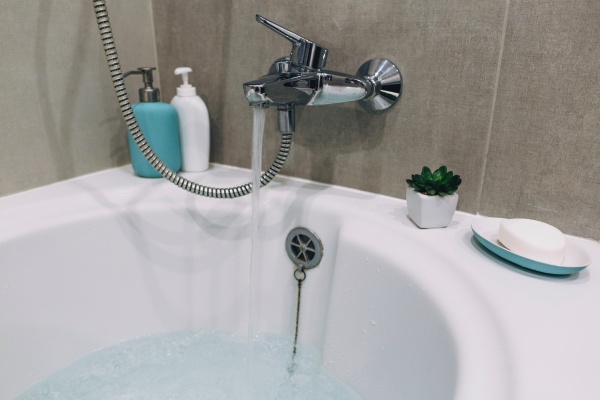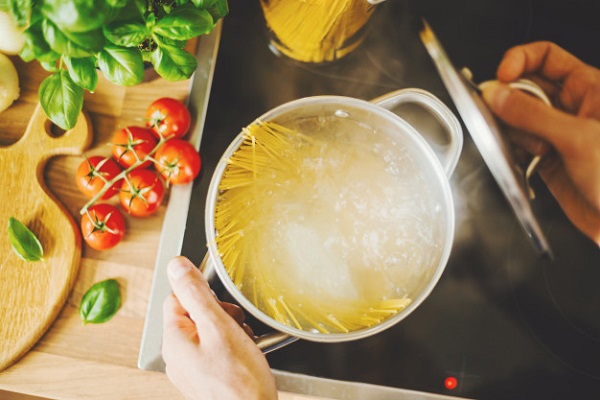When you think of greywater, think of “used” water. It is time to discuss today what greywater means from a practical standpoint and how we can lower our water footprint.
Greywater and Everyday Life

How much water do you consume daily? Many people might assume it is a few gallons from doing laundry or even just the couple of water bottles they drink at work.
The truth is though, the average home in the United States uses 70 gallons of water a day! Our showers, laundry machines, dishwashers and toilets all use water. You also have to factor in things like cleaning the floors, washing your car, and using the water itself.
Those seventy gallons of water typically come from a safe, clean water source. Have you ever stopped and wondered why we need to use drinkable water to flush our toilets?
- Approximately 11% of the world’s population does not have access to water from improved sources, and we are flushing it down the toilet.
Does this sound acceptable to you? Let’s take a look at one of the ways to reduce our use of freshwater.
Achieve A Zero-Waste Bathroom Now!What is Greywater?
In the simplest of terms, it refers to water that has been used for washing dishes, doing laundry, or showering. Water that is, basically, slightly dirty with particles and soil but not exposed to toxic chemicals or bodily fluids.
In your home, blackwater is water that has come in contact with feces or urine and has been contaminated. It is considered sewage, and we should dispose of it down the drain.
- Greywater, on the other hand, is all the water that hasn’t come in contact with bodily fluids.
- About 50-80% of the water produced in homes ends up being greywater.
- Most likely, your home currently doesn’t use your greywater. It is only running down the drain and into the local sewer system.
Your greywater, however, can serve a variety of purposes in your home!
Learn More About Water Pollution Types!Benefits of Using Greywater

The benefits of using greywater for additional purposes are numerous. Even if you live in an area with seemingly endless potable water, reducing your water consumption is always positive.
Let’s take a look at some of the reasons why you should put your greywater to good use:
- Reduces potable water consumption
- Lowers the pressure on local sewer systems
- Decreases the pressure on water treatment plants and associated carbon emissions
- Creates a more drought-resistant environment
- Saves you money by reducing the water bill burden!
Given that you use an average of 70 gallons a day, creating long term uses for greywater (replacing the need for freshwater) will make a dent in how many gallons you need to pay for regularly.
Companies and Businesses are Using Greywater Too!
Western Washington University has a small sign in the women’s locker room, letting members know that greywater from the sinks and showers are processed again – and used in the bathrooms.
You wouldn’t notice though walking in because using greywater doesn’t mean the facility is dirty or smelly. There are thousands of buildings around the world using greywater systems to reduce their water usage, without compromising on safety or cleanliness.
LEED Certification, awarded to buildings working towards sustainability, provides “points” to companies that are using rainwater and greywater systems. They recognize the environmental benefit of these programs in constructing and maintaining buildings and want to encourage more industries to do so.
So How can YOU Use Your Greywater?

The first thing to consider is installing a greywater system in your home!
What is a Graywater System?
Graywater systems are built into your pipes to process water coming from the sinks and showers and redirect them to your garden or your toilet. You will typically find them in business buildings that require an efficient way to redirect water. Nevertheless, we can use smaller systems in our homes.
The greywater collected can then be used for a variety of purposes.
- Instead of flushing potable water, why not use the slightly dirty water from your bath? You won’t be touching it anyways!
- A 10-minute shower with a low-flow showerhead consumes 25 gallons of water, and a bath can use between 30-50 gallons. If you have more than one person showering in your home, the water you go through adds up quickly! That ends up being plenty of water for handling your waste.
- Greywater systems will adjust your plumbing to fill the toilet with water collected from the shower, without requiring you to lift a finger!
Sink to Toilet Systems
There are also greywater systems that you can rig up yourself, without changing a lot of piping in your house.
- Instead of letting the water from the sink go down the drain, you can install plumbing that then feeds into the toilet bowl and fills it up.
- If the toilet bowl is full, the water can run down the drain as an extra.
- This type of system only works with sinks that have easy access below.
Using Greywater in Your Home
If you’re not ready to install a system for handling your greywater, there are other options as well! Greywater occurs in our kitchens, bathrooms, and any room that has a sink. Before you throw out “used” water, think about whether you can repurpose it for something else first.
1. Cooking Pasta
After cooking your pasta or boiling your potatoes, don’t throw the water out! That water can be used to water your house plants.
- We can also use pasta water as a broth base for your next soup or cheese sauce. The starch from the noodles provides an excellent thickening agent.
2. Stack your plants and water them together!
If you’re a house plant grower, you’ve probably set your pots in the sink and then soaked each plant through. When you do that though, the water coming out the bottom runs down the drain, without being soaked up by the plant.
- Next time, try holding one plant above the other, so the water draining out waters the next one underneath!
3. Wash your car – on your lawn
If you do choose to wash your car, park your car on your lawn (if possible) so that the ground can absorb the water.
- Don’t use any chemicals or harsh soaps when washing your car. The chemicals will damage the plants and contaminate the water system if it heads down the public drain.
4. Collect water from your shower
Those first few minutes of waiting for your shower water to heat up can waste quite a few gallons of usable water, especially if your water heater isn’t the greatest. Unless you use an electric water heater for instant hot water, you let perfectly good water go down the drain.
Instead of losing that water, place a five-gallon bucket (or mop bucket) at the bottom of your shower to collect the cold water. Afterward, you can use that bucket of water to:
- Water your houseplants
- Flush the toilet
- Water your garden
- Mop the floor
- Clean the house
The water coming out of your shower head is perfectly clean and potable. If the bucket for collection is clean, the water will be safe to use for a variety of chores!
5. Don’t dump ice down the sink!
Instead of tossing out the ice building up in your freezer, place it in your house plants. As it melts, they’ll keep your little plants happy and watered. Ice can also be tossed out the window onto the lawn. It’ll melt quickly! Keeping as much water out of the sewer system as possible is always a good idea.
Your Water Footprint

Considering how you use your greywater is just one of the many ways you can reduce your water footprint and help reduce the quantity of water wasted in your home.
- You can also implement water reduction strategies to use less water in the first place and adapt your diet around less water-intensive foods.
- If your work or school has a sustainability team, consider bringing up greywater systems at the next meeting – you never know who will be receptive to the idea!
Do you use the greywater in your home? How else are you tackling your water footprint? Let us know your opinion on greywater usage and the means you employ to save water and money at home!